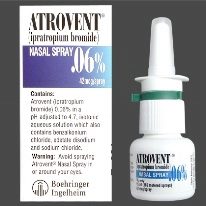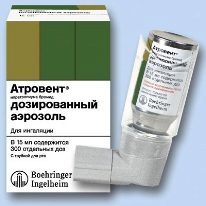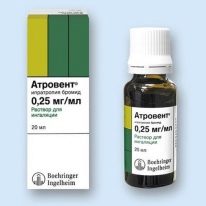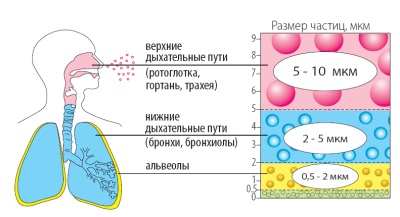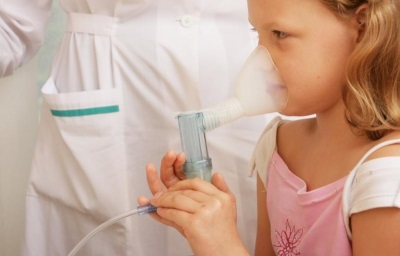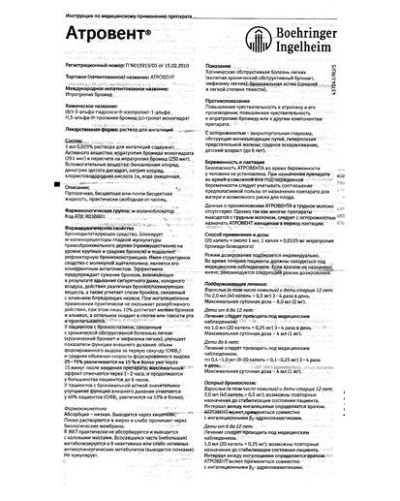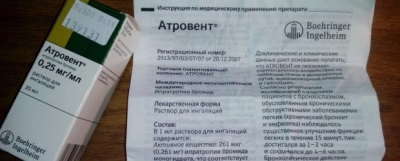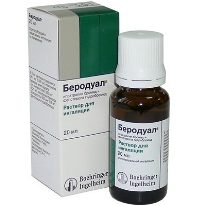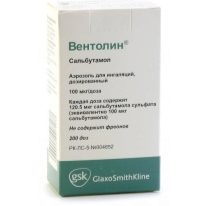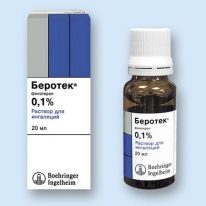Antrovent for children and inhalation with it: instructions for use, reviews
Atrovent is often prescribed to eliminate bronchospasm. Is it possible to use it in childhood and how to properly inhale with this drug to a child?
Release form
The drug is produced in several forms:
- In the form of an aerosol. Such Atrovent is represented by metal cans that have a metering valve with a mouthpiece. Inside the container there is a colorless transparent solution containing 200 doses (in cans of 10 ml) or 300 doses (in a 15 ml medicine).
- In the form of a solution used for inhalation. This drug is sold in dark glass bottles with a capacity of 20 or 40 ml, as well as 100 ml.
- In capsules containing powder. One pack of this form of Atrovent includes 100 capsules.
- In the form of an aerosol that is injected into the nose. This variant of Atrovent is available in bottles equipped with nasal adapters. The capacity of the bottles is from 10 to 30 ml (inside contains from 200 to 600 doses).
Composition
The main active ingredient in Atrovent is ipratropium bromide. One dose of aerosol for inhalation and for intranasal use contains 20 μg of this compound. Each milliliter of inhalation solution contains 250 µg of this substance. One capsule contains 200 µg of such a component.
Operating principle
Atrovent is a medicine from the group of bronchodilators. This remedy affects the cholinergic receptors in the bronchi, as a result of which the muscles relax, the bronchi expand, their tone decreases, and the patency improves. Under the action of Atrovent, mucus in the bronchi is secreted to a lesser extent, but at the same time the drug does not block its discharge.
Inhalation with Atrovent ensures that such medication is delivered only to the respiratory tract, therefore the effect of the drug is mainly local. Most of the funds settle on the way to the bronchi, and only 10% of the active substance gets into the bronchial tree itself. The effect of inhalation appears within 5-10 minutes after the application of Atrovent. Its maximum is observed after 1-1.5 hours, and the total drug acts for about 6-8 hours.
In chronic lung pathologies, Atrovent has a positive effect on respiratory function. Such a drug is noted for its ability to increase the volume of exhalation, as well as its speed.
Indications
Inhalation using Atrovent is carried out at:
- Obstructive pulmonary pathologies.
- Spasm of the bronchi during SARS and colds.
- Bronchial asthma.
- Spasming of the bronchial tree during operations.
- Diagnostic procedures.
- Preparation for the introduction into the bronchi of some other drugs, for example, antibacterial.
Intranasal form of Atrovent is used for chronic rhinitis.
At what age is it allowed to take?
Before the age of 6, use Atrovent aerosol carefully and only under the supervision of a physician. Inhalation solution is allowed from 5 years. If you need to use such a drug for younger children, for example, at 1 year old, the doctor will evaluate the possible risks and the need for treatment, after which he will determine the desired dosage.
Contraindications
Instructions for use does not allow the use of Atrovent with hypersensitivity to this drug.The drug should be prescribed with caution in central paralysis, Down syndrome, brain damage and chronic pulmonary pathologies.
The following video by Dr. Komarovsky deals with the treatment of obstructive bronchitis in children:
Side effects
The child’s body can respond to the Atrovent with such negative symptoms:
- An allergic reaction, for example, a rash on the skin, swelling of the face or difficulty breathing.
- Constipation, bloating, nausea or unpleasant taste in the mouth.
- Weakness, dry mouth, nervousness, shaking hands, or headaches.
- Pain and burning in the eyes, blurred vision.
- Cough or increased viscosity of mucus in the bronchi.
- Irritation or dryness of the nasal mucosa (with intranasal use).
- Delayed urine excretion.
Instructions for use and dosage
The choice of dose for a particular patient is influenced by many factors, including the child's well-being, tolerance of the Atrovent, and the severity of the disease. Therapy with such a drug must be supervised by a doctor. It is unacceptable that the aerosol gets into your eyes, because it can impair vision.
Before using the balloon or bottle Atrovent should be shaken. If multiple doses are administered, a one-minute pause is made between them. Children over 6 years old can use aerosol in a can for inhalation 4 times a day. Each dose is administered 2 doses. The process will look like this:
- Remove the cap from the packaging.
- Tell the child to take a deep, slow exhale.
- Turn the can over and offer the child to clasp his tip with his lips.
- Let the child take a deep breath, and you press the bottom at this time.
- Tell the child to hold their breath.
- Remove the tip from the baby's mouth and tell it to exhale slowly.
- After a minute, repeat all the steps to introduce the second dose.
Atrovent is inhaled with a solution using a nebulizer. For children younger than 6 years old, from 0.4 to 1 ml of medication is used, for children 6-12 years old, 1 ml of solution is taken per inhalation, and at the age of more than 12 years, 2 ml of Atrovent is used for one procedure. Inhalation spend 3 or 4 times a day. The maximum dosage of the solution up to 12 years is 4 ml per day, and for children over 12 years old it is 8 ml per day.
Before the procedure, a saline solution is added to the medicine to make only 4 ml. The diluted drug can be kept in the refrigerator, but not longer than 1 day. Before the next procedure, such a solution should be heated to + 20 ° C.
Atrovent capsules are also used for inhalation, but such procedures require a special inhaler. A capsule is placed in the device, and inhalation itself is carried out 3-4 times a day.
At the cold, Atrovent is injected in the appropriate form into each nostril three times a day in two or three doses.
Watch a useful video in which Dr. Komarovsky talks with his guests about inhalations in the treatment of children:
Overdose
Excess doses of Atrovent lead to dry mouth, rapid pulse or visual impairment.
Interaction with other drugs
The use of Atrovent along with beta-blockers or anticholinolitics enhances the effect of such drugs.
Terms of sale
To purchase Atrovent in a pharmacy, you need a prescription from a doctor.
Storage conditions and shelf life
The tool is kept in a dry place at room temperature away from sunlight. Shelf life of the drug is 3 years.
Reviews
In most cases, the reviews on the application of Atrovent are positive. Moms say that the drug acts fairly quickly, is well tolerated and rarely causes side symptoms.
Analogs
Atrovent can be replaced with drugs with the same or similar active substance (Iprovent, Spiriva, Truvent) or drugs with similar therapeutic effect (Berodual, Berotek, Ventolin and etc.).

